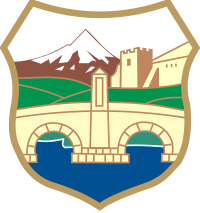Tumba Madžari

Tumba (Macedonian: Тумба Маџари) is a Neolithic settlement located in the north-eastern part of Skopje, Macedonia and it is the most significant Neolithic settlement in Skopje valley. It was discovered in 1961/2 in the course of the archaeological trial excavations related to the construction of the motorway.
The first archaeological excavations were conducted in 1978 by the Museum of Macedonia, under the leadership of Voislav Sanev. The stratigraphy of the settlement has a cultural layer that indicates life was continuously taking place in the period between year 6000 and 4300 BC.[1]
The land was used mostly for agriculture, conserving the remains of a multifaceted settlement. The evidence of the multiple stages of the settlement is found within a three-foot layer which shows the three stages of life within the community and that the settlement was part of the Anzabegovo-Vršnik cultural group. One of the first structures found was a house, believed to be a sanctuary,demonstrating evidence for religion.[2]
The most representative finding of site is the discovery of Pre-indo-European sculptures of the Great Mother, suggesting the existence of the Cult of the Great Mother Goddess. These findings are remarkable evidence of the material and spiritual life and high artistic and aesthetic achievements of the Neolithic man from Macedonia.[3][4]
External links
- Official web page of the archaeological site Tumba Madzari
- Официјална страница на археолошкиот локалитет Тумба Маџари
- http://makedonija.name/culture/tumba-madzari
References
- ↑ Tumba Madzari
- ↑ Chulev, Basil. "Proto-Indo-European Aryan Homeland of the Great Mother Goddess: Neolithic village of Tumba Madžari in Skopje, Macedonia". academia.edu. Retrieved 27 February 2015.
- ↑ "Tumba Madzari waiting to become Neolith village". macedonia.co.uk. Retrieved 27 February 2015.
- ↑ Chulev, Basil. "Proto-Indo-European Aryan Homeland of the Great Mother Goddess: Neolithic village of Tumba Madžari in Skopje, Macedonia". academia.edu. Retrieved 27 February 2015.
Coordinates: 42°00′05″N 21°30′18″E / 42.00139°N 21.50500°E
